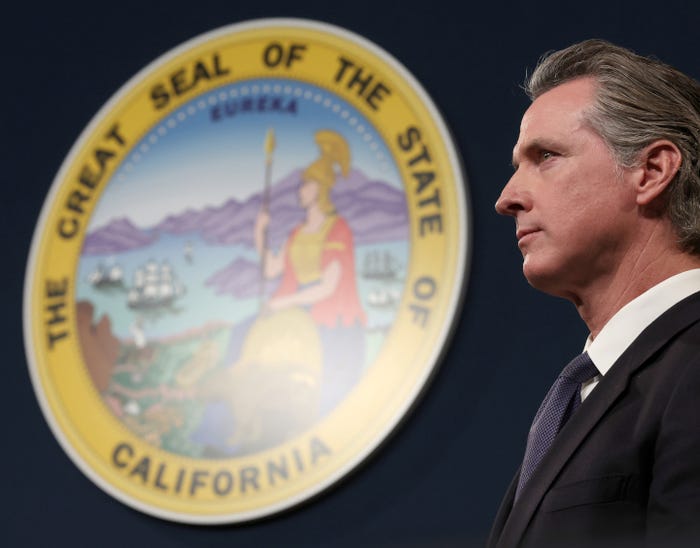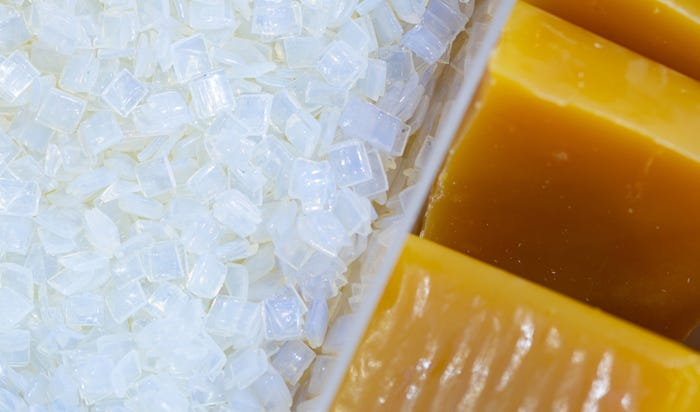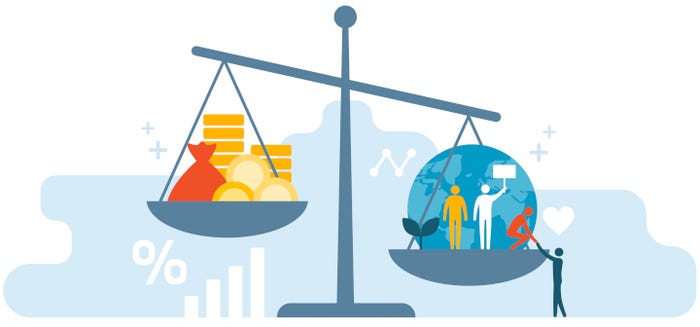5 Sustainable Packaging Predictions for 2024
Compostable packaging’s future? Who’s got the heaviest eco hammer? A “source reduction” rewrite? Micro solutions? Ultimate sustainability decision drivers? Find out here.
January 3, 2024

The editors here at Packaging Digest have asked me to once again gaze into the cluttered caverns of my mind and find the new year’s top sustainable packaging trends.
If I were you, I’d first want to know how my four predictions for 2023 panned out. Frankly, I wanted to know as well, so I reviewed them. Here’s what I wrote:
1. Reverse material substitution (from plastic to paper) will grow.
2. Compostable packaging will lose some of its cache.
3. Europe will continue to ride and lead the anti-greenwashing wave.
4. Secondary packaging will become a new pressure point.
Did any of these come true? They all did. In fact, one recent article (November 7, 2023) pointed to both trends #1 and #4: Amazon Facility Eliminates Plastic Packaging.
So, can I move through 2024 with perfect prognostication?
Here are my predictions:

Sohel Parvez Haque / iStock via Getty Images Plus
1. Ditto 2023 trends.
All of what I predicted for 2023 will continue into 2024.
This should not be a surprise, but it’s important that I say it in case any of you think that these were merely one-time blips on the sustainable packaging radar.
For example, look at the latest corrugated Amazon packaging. It most likely states “Our Boxes Use Less Material” and invites you to learn more via Quick Response (QR) code. This is the holy grail of sustainable corrugated (secondary) packaging, as one can ship the same amount of goods with a significant reduction in total weight, positively impacting the cost of cartons, on-the-road transportation costs, fuel usage, and greenhouse gas generation.
Here's another example. The latest round of the Packaging and Packaging Waste Directive (PPWD) as described by the European Parliament in March 2023 calls for 70% of all waste to be recycled by the end of 2030, with the plastics recycling rate doubling to 55% since 2008. There are also source reduction provisions that could reduce or eliminate primary packaging cartons, such as toothpaste boxes.
Further, confidential discussions I’ve recently had with more than half a dozen global converters and consumer packaged goods companies (CPGs) indicate that they are not going to focus on compostability, as it is not circular and not widely in play. Their focus has been and will be on recycling.

Justin Sullivan / Staff / Getty Images News via Getty Images North America
2. California’s got more eco-clout than federal agencies.
The state of California is making both the Environmental Protection Agency (EPA) and Federal Trade Commission (FTC) irrelevant.
On October 7, 2023, Governor Newsom signed Senate Bill (SB) 253, a law requiring companies that operate in California and generate over $1 billion in annual revenues to disclose their direct and indirect emissions. On the same day, he signed SB 261, which requires companies with annual revenues of at least $500 million to disclose information regarding their climate risk management.
This was on top of the June 30 signing of The Plastic Pollution Prevention and Packaging Producer Responsibility Act (SB 54), which shifts plastic pollution responsibilities in California from consumers to producers. The Extended Producer Responsibility (EPR) law’s objective is a 25% reduction of single-use plastic packaging used in the state by 2032.
Wes Carter, President of Atlantic Packaging in Wilmington, NC, serves on the 13-person Advisory Board that will help CalRecycle implement SB 54. I recently asked him to explain how the law will impact the packaging industry. He says, “Ultimately, SB 54 is meant to be a catalyst for activating a greater level of collaboration between the consumer products packaging supply chain, recyclers and waste haulers, state and local governments, and individual citizens. It is a call to action. Intelligent EPR can be the framework for how we create a sustainable revolution in our world and stem the tide of packaging pollution.”
October 7 was also the day that Newsom signed Assembly Bill (AB)-1305, the Voluntary Carbon Market Disclosures Act (VCMDA). The VCMDA is intended to address “greenwashing” by requiring detailed disclosure of the methodology for tracking and verifying claims regarding net zero, carbon neutrality, or emissions reductions, as well as disclosure regarding voluntary carbon offsets (VCOs) purchased, used, marketed, or sold within the state.
You can avoid these laws by not doing business in California, or by ensuring that no one in California sees your marketing, advertising, or sales messaging. This includes social media.
Good luck with that.

3. New definition of “source reduction.”
Ironically, source reduction is now being defined as a strategy to promote reduced plastic usage rather than simply reduced material usage.
Replace a lightweight plastic package with a heavier paper one? As my packaging efficiency research has demonstrated many times over the last 30 years, this is generally not a scientifically valid approach to reductions in solid waste or greenhouse gas generation. The irony here is that plastic packaging was able to penetrate packaging markets because it was the most source reduced material. Today, the tables are turning such that consumers are being led to believe that eliminating plastic is the best way to source reduce packaging.
As I’ve written many times, the most sustainable package is the one that provides maximum product value with minimum economic, environmental, and social waste. We cannot afford to remove key materials from our sustainability toolboxes simply to satisfy the non-scientific posturing of certain political groups and non-governmental organizations (NGOs).

Fahroni / iStock via Getty Images Plus
4. Focus on packaging barriers and adhesives.
Barriers and adhesives are taking on more strategic roles in the sustainable packaging universe.
Again, the goal here is to replace fossil fuel-based and/or non-recyclable materials that reduce or contaminate packaging recovery streams. This situation is allowing companies such as Ingredion to promote the oil and grease resistant properties of starch-based coatings, which are plant based, recyclable, and compostable. It also has adhesive label and packaging producers such as Avery Denison, HB Fuller, Henkel, and Bostik scrambling for plastic-free solutions as well.
Besides starch, “back to the future” coatings might contain cellulose or lignin, all of which are plant based. Polyhydroxyalkanoate (PHA), a bio-resin, is also in the mix, but is currently too expensive to consider for broadscale use. Companies such as Danimer Scientific are investing mightily to scale PHA production and bring the cost down to reasonable levels, in the $2/lb. range.

Elenabs / iStock via Getty Images Plus
5. Decisions consider costs more than science.
The desire for science-based, sustainable packaging decisions appears to be declining, as the perceived need for packaging cost control increases.
I can name at least two large global CPGs that now have their packaging functions report to their purchasing departments. (To protect friends and colleagues, I cannot name names at this time.)
This type of reorganization means that marketing department desires to bend to generally uninformed consumer demands and perceptions will reduce or eliminate science-based decision making.
My judgement says that, long term, this will lead to greater scrutiny by NGOs and regulators and continue trend #2, in which states such as California, New York, Vermont, Oregon, Washington, and Colorado step into the science-based decision-making void.
Sadly, the various political dispositions in each state will create a confusing patchwork of guidelines, laws, and regulations.
I bet you think I’m negative regarding the future of truly sustainable packaging.
I’m not.
We all know that, in the grand scheme of what needs to be done to build sustainable societies, packaging has a much smaller role to play than reducing dependence on fossil fuel-based energy sources and increasing energy efficiency at work, home, and play. Of course, this doesn’t give the industry a “get out of jail free” card to play, especially when it comes to marine debris, pollution, and chemicals of concern.
Use this time to get your creative and innovation juices flowing, while serving the needs of both your customers and theirs.
Happy New Year!
About the Author(s)
You May Also Like




